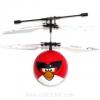- 0 replies
- 1,445 views
- Add Reply
- 4 replies
- 2,077 views
- Add Reply
- 0 replies
- 1,670 views
- Add Reply
- 2 replies
- 1,907 views
- Add Reply
- 0 replies
- 3,011 views
- Add Reply
GIS and Remote Sensing in Agriculture, Food Security and Climate Change
By indepthresearchservice,
Event: GIS and Remote Sensing in Agriculture, Food Security and Climate Change Course
Venue: Indepth Research Services, Mombasa, Kenya.
Event Date: 12th – 16th March 2018.
NITA CERTIFIED
RECENT CLIENTS
INTRODUCTION
The main purpose of the course is to enhance the capabilities of technical staff involved in Food Security Analysis, climate analysis and agriculture by providing them with an understanding on the use of spatial and Earth Observatio
Raster.tif into ascii format
By Maya007,
Hello,
I was trying to use IDRISI with GIS files. For this i need to convert raster file in .tif format into ASCII to import into IDRISI. Can someone tell me how this could be done. I tried the tool raster to ascii but got error message saying output file is empty.
Could someone tell me why is it so and what should be done.
Thanks a lot,
Maya
ESRI DESKTOP ASSOCIATE Exam
By walidmessaoudi,
i m preparing for ESRI DESKTOP ASSOCIATE Exam and i need some tips about this one .( passing score, kind of questions, wil i pass entry or associate ....) i have 10years work with arcgis thanks for all
Blank spaces in the map to a feature class in arcmap
By Maya007,
Hello,
I have some basic doubts in Arc-Map. Please answer
I want to convert the blank spaces within the map into another feature class. How could that be done?
I have roads and forests in the map now. I want the remaining blank spaces to be like a feature class like polygons or even as raster. How is it possible?
I tried by making a feature class (polygon) covering entire study area and then subtracted roads and forests from this using raster calculator. I then realized it do
Esri training

By intertronic,
sorry for short notice..
there is a free MOOC of "Earth Imagery at Work"
Be aware registration closes the 22nd FEB 2018, so hurry up!
https://www.esri.com/training/catalog/57aba196cbc441087e0d2395/earth-imagery-at-work/
-
Forum Statistics
8.8k
Total Topics43.5k
Total Posts



